 The courts and the Kerala government may be demonising and humiliating Hindus as a way of taking pot-shots at the BJP government, which they view as Hindu-friendly. What is bitterly ironic is that the BJP government has done absolutely nothing to save the Hindus of Kerala, but stood by, apparently either helpless or uncaring. – Rajeev Srinivasan
The courts and the Kerala government may be demonising and humiliating Hindus as a way of taking pot-shots at the BJP government, which they view as Hindu-friendly. What is bitterly ironic is that the BJP government has done absolutely nothing to save the Hindus of Kerala, but stood by, apparently either helpless or uncaring. – Rajeev Srinivasan
The Sabarimala issue is one in which there are no winners, but many losers. Most of all, the losers are the faithful, especially Kerala Hindu women, who have had their beliefs trampled underfoot by an uncaring state. Almost nobody comes out of it smelling of roses, and it has been a disastrous series of events, the real import of which we don’t yet understand. However, it feels very much like a tipping point, although which way things will go is not yet clear.
While the proximate cause of the problems is the Supreme Court ruling on 28 September, there is a preponderant cause and a root cause, too. We can also think in terms of three different stakeholders, none of whom exactly covered themselves in glory: the Supreme Court, the Communist Kerala government, and the BJP union government.
The Supreme Court
The proximate cause is the Public Interest Litigation (PIL) that the Court unwisely admitted: because those filing the case had no obvious locus standi. None of them were Kerala Hindus, or pious Ayyappa devotee women, who might have had a legitimate desire to visit the temple in their child-bearing years between 10 and 50. Instead, it was filed by several Delhi lawyers (four out of five of them later changed their mind once they understood the situation, but the Court would not let them withdraw the petition, perhaps for technical reasons, perhaps because of the virtue-signalling opportunity).
There are plenty of concerns about the entire PIL process, wherein a fashionable cause can be brought to the Supreme Court directly: a situation unique to India. Comparable class-action suits in the US, for instance, have to wend their way for several years through lower courts, courts of appeal, etc, before the Supreme Court accepts it only if it is a constitutional matter. In India, on the other hand, anybody with an axe to grind and lots of money can hire a famous lawyer, get the case listed straight as a PIL in the SC, and have the Court rule in their favour in a few months, damn the impact on society at large. It really isn’t in the “public interest” after all, just a pet cause for the litigants.
The simplest thing regarding Sabarimala would have been for the Supreme Court to maintain the status quo ante. However, based on a narrow reading of their ambit, and influenced no doubt by current fads and the media, the Court chose to impose a ruling that is the very opposite of Solomonic: instead of being harsh but even-handed, it is harsh but one-sided, and doesn’t take the ground situation into account.
This is the most glaring proximate cause; on reflection, the Court should have rejected this PIL, but it was positioned as a “gender rights” issue, and presumably in the wake of #MeToo, judges too are eager to show how politically correct they are with respect to this latest fashion.
The Supreme Court, in a rambling verdict, ruled on 28 September said that all women should be allowed free entry, regardless of consequences. The simple-minded focus on gender equality shows two things: a) the baleful influence of Western fads and causes on the courts, b) the possibility that the Court had made up its mind even before any arguments were heard.
The latter possibility is buttressed by two observations. There was an immediate uproar, and thousands of ordinary Kerala Hindu women, the purported “victims” being given succour by the ruling, took to the streets in massive protests, because they felt their faith and traditions were under attack by outsiders. They were #ReadyToWait till they were 50, they said. The sight of thousands of ordinary middle-class mothers and grandmothers out on the streets should have been instructive.
But the Court choose to ignore them, and set the hearing for the clutch of review petitions on 13 November, aware that the temple would open for Diwali on 5 and 6 November. If the process were fair, the hearing of the review petition should have been before Diwali, because once a single young woman entered, there would be a fait accompli, and the tradition would have been violated, to the chagrin of the faithful.
Indeed, there were startling battle scenes on the days the temple was open in October and earlier this month with large numbers of policemen in riot gear protecting certain female activists who were obviously not pilgrims, or driven by any need to pray. They were there to make a point. This prospect caused serious angst among the devotees, leading to scenes of unprecedented protests. There was chaos.
These law and order problems and the sentiments of the protesting women did not sway the Court, and when they accepted the review petitions in camera on 13 November, the Court did not stay their earlier judgment, which they could have while analysing the situation on the ground. On the contrary, they postponed the hearing of the review petitions to 22 January, which is after the Sabarimala season is over. They explicitly said there was no stay on the 28 September ruling. In other words, they were signalling the Kerala government that the latter should go ahead with its plans to bring in women activists, and perhaps that the review petitions would be thrown out.
The impartial observer is forced to ask whether there is a pattern in the Supreme Court’s rulings in the recent past, generally in the wake of dubious PILs. There was the jallikattu ban, the dahihandi ban, the Diwali cracker ban—all of which were based on no scientific evidence, but all of which had the result of demeaning Hindu practices. The impression one gets is that court is simply sniping at the Narendra Modi government, possibly with a political agenda. Hindu sentiments are the collateral damage.
Kerala Government
There is a preponderant cause, which is the hostility of successive Kerala governments towards Hindus (and only Hindus) and in particular against the Sabarimala Temple. Let us recall how in the 1950’s, the temple (which was then seldom visited) was set on fire by Christians seeking to grab the forest around it. The response of C. Kesavan, the then-CM and Congress leader, was instructive: “Good. One more house of superstition burned down”.
Successive Congress and Communist governments have continued their step-motherly treatment of the temple. It became a cash cow for them, as the number of pilgrims grew exponentially in the 1980s and later, now reaching some 40 million a year, quite possibly the largest pilgrimage in the world. The governments simply siphoned off the entire revenue of donations by the faithful. And they did nothing to whatsoever improve the facilities.
It is unbelievable how much has been looted from pilgrims—hundreds of crores per year—without a paisa being spent on improving amenities for them. There is absolutely no organisation unlike in Tirupati: pilgrims are not able to purchase passes to enter at a given time and many end up spending 10-12 hours waiting in line for a glimpse of the sanctum; there are far too few toilets and bathrooms; there is not enough shelter from the sun and rain (the November-January season is relatively cold and the northeast monsoon is active).
There are feral pigs rooting in the muck, with fierce fangs; the whole area is a mess with mud, pig droppings, plastic, flowers, and human waste. There were photographs of young children sleeping propped up against garbage bins, others sleeping next to rooting pigs. These are people who have come from far and near, after 41 days of penance, have been overcharged for everything, been forced to walk 20 kilometres from the Nilakkal station to Pamba, then climb steep hills for 4-5 km to arrive at the sanctum. Only in India are pilgrims treated with such contempt.
And indeed, the temple area has exceeded its carrying capacity because of no investment whatsoever for decades. Frankly, the emotion it induces is not bhakti but bibhatsa: the fortitude of the pilgrims who brave all this is astonishing.
None of this is beyond fixing: but it needs money, and more importantly, will. The money is there: the government commingling pilgrim offerings with government funds. The will is missing. It is ironic that this year, when the Pinarayi Vijayan government wanted to control the crowds for their own purposes, they have been able to create some kind of system of reducing the crush at the Sannidhanam. Why couldn’t they do crowd-control all these years?
It’s not just the Communists who are hostile, but so are their alter-egos, the Congress. In Kerala, the Congress reflects Christian interests, which include the conversion of Western Ghats forest land to privately-owned Christian assets, especially plantations and resorts. There was the instance where the previous Congress chief minister said that he didn’t support a proposed rail link to Sabarimala because it would mean the loss of Christian land for the project!
The actions of the Kerala government after 17 November, when the shrine reopened for the season, have been nothing short of extraordinary. They ordered the police to wear their boots in the Sannidhanam, hitherto a holy area around the sanctum sanctorum; there were startling photos of the police drying their rain coats on a clothesline erected just in front of the sanctum sanctorum. A Section 144 prohibitory order was issued, which forced all pilgrims to vacate the waiting sheds. They hosed down the entire area so that nobody could lay down a sheet and lie down.
Furthermore, in an act that could only have been intended to provoke, there were photographs of policemen standing on the hitherto sacrosanct 18 steps, with their back to the deity, hosing down the surroundings. So far as I know, the only person who had ever been entitled to climb the steps without the traditional irumudi (offerings) is the officiating tantri (priest). These are startling violations of tradition.
They started arresting pilgrims who had come after all the traditional penances: firebrand Hindu Aikya Vedi leader Sasikala and Bharatiya Janata Party MLA Surendran. Many pilgrims were arrested and summarily removed, their sentiments ignored. At least one pilgrim has been reportedly injured when police kicked him. The pilgrims who were merely chanting Ayyappa stuthis were set upon by the police.
On the other hand, a local airport was turned into a sea of khaki to protect a known rabble-rouser woman who had arrived from Mumbai. There was no question where the government’s sympathies lay. Meanwhile, they are treating pilgrims as criminals and terrorists (a Communist minister, with a Christian name, actually called the pilgrims, terrorists).
This has all the signs of a simple agenda: desacralisation of the shrine. The Kerala government is planning to remove all sanctity, violate every rule there, and reduce it to an object no longer of reverence, but of disdain. It is as though they would like to turn the temple into an empty shell, devoid of sacredness, and kill off this religious tradition and pilgrimage. It is like a medieval attack of one religion on another: pious Communists want to wipe out Hindus.
That would be quite natural for a Communist government to do, but it is also a violation of the fundamental right to worship unmolested. The fact is that there appears to be no appeal against this assault: there is nobody the distressed pilgrims can turn to for help, as the courts are hostile. In these circumstances, it is quite possible that a few agents provocateurs can come into the picture. The idea may be to create a Bluestar-like situation, with violence used as an excuse for physically destroying the shrine using, possibly, military equipment.
I have never seen a religious shrine treated with such contempt as Sabarimala. It is unbelievable in a democratic country. The entire might of the state has been brought to bear against an old temple, with its pious, unarmed, peaceable pilgrims being treated inhumanely. It is clear that the Kerala government will stop at nothing to force the entry of young women into the temple, come what may. Their contempt for the Hindu citizens of Kerala, who are protesting peacefully against unjust laws, much like Gandhi did Salt Satyagraha, could not be clearer. The words “apartheid” and “pogrom” spring to mind.
It is possible that both the courts and the Kerala government may be demonising and humiliating Hindus as a way of taking pot-shots at the BJP government, which they view as Hindu-friendly. What is bitterly ironic is that the BJP government has done absolutely nothing to save the Hindus of Kerala, but stood by, apparently either helpless or uncaring, nishprabha.
There were several things that the central government could have done. First and foremost, there is the history of Article 356, which was first used in Kerala by Jawaharlal Nehru against the then-Communist government of E.M.S. Namboodiripad in 1959. President’s rule was imposed based on a “breakdown in law and order”, which was probably no worse than what is being unleashed now on pilgrims by the current Communist government under Pinarayi Vijayan.
I read in a tweet from @trramesh, a lawyer, that even Article 356 was not necessary: the Center could use Article 356 (a)(1) to just take over the Travancore Devaswom Board and Pathanamthitta District where the shrine lies, and administer it directly to prevent further chaos and problems. I don’t know if this is feasible, to have a federally administered enclave in a state, but it could be explored.
In fact, it is incumbent on the Centre to act in such manner, because the issue goes beyond state boundaries: it is not a Kerala issue, and thus, by definition, it becomes a Central issue, because the affected pilgrims are from all over the south. Thus the state governments of Tamil Nadu, Andhra Pradesh, Telangana, and Karnataka (and Maharashtra, and Delhi, and so on) are all parties to the matter because their residents’ fundamental right to religious freedom, guaranteed in the Constitution, is affected.
Secondly, the Centre could have brought out an ordinance, or executive order, as they did in the jallikattu case, which would have stayed the court order at least till the time came to vote on it in Parliament. That probably would have taken care of this year’s pilgrim season without any ill effect. I am not sure if there are any legal obstacles to this as it is a constitutional issue, but then, I assume, so was the jallikattu case.
Thirdly, it could have just spoken out. There was stunning silence from the Centre. This betrays either incomprehension about what’s going on in Sabarimala, or cynical calculation, or both. The Home Minister, and especially the Prime Minister, did not say a word about Sabarimala. Amit Shah, the president of the BJP, did make strong statements, but he is a politician, not the inspirational leader that Narendra Modi is, and so his statements—which were also not backed up by any visible action—did not have the same impact.
I heard Arun Jaitley speak about the issue, but he did it in a very general, vague, “lawyerly” way without mentioning the name “Sabarimala” even once. I heard Yogi Adityanath speak, but what he said was the following: “if the Supreme Court could make a quick decision about Sabarimala, why was it dithering on Ayodhya?” These were not the most satisfying responses, and it’s clear that the Vijayan government is not particularly bothered about them.
This brings us back to the other possibility: of a long game being played. It is clear that there is a demographic wall against the BJP in Kerala. I have long ago explained this by what I see on the ground: Kerala is (approximately) 30 per cent Muslim, 30 per cent Christian (including those who have converted but retain their Hindu names for various reasons), 30 per cent Communists and only 10 per cent actual Hindus.
My conjecture was more or less proved in the 2016 assembly elections in Kerala. The BJP, under Kummanam Rajasekharan, a soft-spoken veteran, ran a very good campaign based on Hindu unity. They made unity the centrepiece of the campaign, invoking Sri Narayana Guru (Ezhava), Chattampki Swamikal (Nair), and Mahatma Ayyankali (SC/ST), representing the three biggest groups of Hindus.
And Hindus responded. In alliance with the BDJS, an Ezhava party, the BJP won 15 per cent of the vote. I could argue that, in effect, every Hindu in Kerala voted for the BJP and BDJS. (Remember, there are large numbers of people with Hindu names who are Christian or Communist, and they don’t count.) In other words, the Hindus of Kerala delivered what they could for the BJP.
There may be a feeling among some BJP people that Kerala voted against them, so that they did not win any parliament seats, and only one assembly seat. (This is a specious argument anyway, because the PM is responsible for the welfare of even people who didn’t vote for him.) But the fact is that the minority Hindus are powerless: on their own, they can never give the BJP victory. On the other hand, the Congress, with its vote-banks of Christians and in many cases Muslims, pretty much are assured of victory. At best the minority Hindus can only act as spoilers.
The only feasible way around this is to “convert” some of the Communists bearing Hindu names back to Hinduism. The backbone of the Communists is the Ezhava community, an OBC (Other Backward Caste) group. In conversations with Ezhavas, I have come to the conclusion that many are committed Communists, brainwashed with a victimhood narrative, wherein their poverty is attributed to FC (Forward Caste) malice, along with manufactured “atrocity literature” (an excellent example is the story of nineteenth century Nangeli who ripped off her breast in protest against a breast tax, a story that was fabricated by a hardcore bigot around 2010 but it is now widely circulated and believed).
What is ironic is that while it is true there were many atrocities against Ezhavas by Nairs and Namboodiris before 1947, those two groups are themselves powerless now, and it is increasingly non-Hindus who are putting Ezhavas down. Furthermore, the Communists themselves have exploited them. After the first Communist government in 1957, it took an astonishing 50 years for an Ezhava to become Communist chief minister. Communists are infamous for casteism.
I have the feeling that there is a cynical school of thought among the BJP leadership that the Sabarimala issue is what can erode Ezhava support for the Communists. In other words, the womenfolk of the Communists will force their men to withdraw their support for the Communists.
I think this is far-fetched. The brainwashing is so deep and so thorough that many Communists see nothing wrong with the destruction of the shrine. They echo what C. Kesavan (himself an Ezhava) said about the setting on fire of Sabarimala—a reduction in superstition. There is no way that hard-core Communists are going to abandon the party. Ironically, in a strange way, their triumphalist notions about the superiority of the “rational, logical” Communists may have been more damaged if their government were overthrown and President’s rule imposed.
On the other hand, the Congress has managed its dog-whistle signalling quite well. They made a faux pas earlier this year when their cadres publicly slaughtered a cow, with the intent of opposing anti-beef sentiment, and pandering to their non-Hindu vote-banks. But they realised that this might boomerang on them, so they were very careful to make soothing noises in the Sabarimala case: they trod a fine line, vaguely supporting the pilgrims, and at the same time being careful to mouth platitudes about women’s rights.
In other words, nothing to upset their vote-banks, but faint praise for the pilgrims, just in case they could gain a few Hindu votes from their arch-foes the Communists. The stunning silence of Shashi Tharoor, their loquacious MP from Trivandrum, was an example of this: for the longest time, Tharoor said nothing about it, leading me to wonder if I had finally discovered the one word not in his vast vocabulary.
In other words, the obituary of the Communists in Kerala has been written too soon. If the BJP in effect sacrificed Sabarimala expecting that it would be the tipping point against the Communists, it is a gross miscalculation. I think the BJP brass is getting terrible advice regarding Kerala. For instance, the only Minister of State at the Center from Kerala is K.J. Alphons, a Christian. I would be astonished if the BJP were to get more than about 100 Christian votes: anecdotal evidence suggests that Christians (rightly) view the Congress as their party. A far more productive exercise might have been to give an Ezhava that lone ministry as a signal.
Thus the BJP has comprehensively mismanaged the Sabarimala issue. They have sacrificed the biggest bulwark of Hinduism in the south against conversion—why do you think 40 million pilgrims come there braving all the inconvenience?—in a vain attempt to win a political battle against the Communists.
Root Cause
Sabarimala shows Hindus yet again that they have no future in the “Idea of India” as defined today. That is the root cause: endemic hostility and discrimination against Hindus, which turns them into second-class citizens in their own country. I wrote about this in 2002, and I reproduce it below; alas, things have only gotten worse in the meantime. Hindus are oppressed:
- By looting Hindu temples through control of their finances (and only theirs; while providing largesse for others);
- By declaring open season for conversion, which is violence against Hindus because they are only victimised and are never the proselytisers;
- By discriminating against them by only allowing non-Hindus to run educational institutions;
- By delegitimising and destroying Sanskrit and Indological studies;
- By creating and cultivating a negative Marxist interpretation of Hinduism and making it the state-supported official view;
- By continuously insulting Hindu tradition by labelling it primitive and superstitious, whereas it is in fact highly rational and scientific;
- By negating Hindu history itself and brushing under the carpet massive Islamic and Christian damage done to it;
- By ignoring all human rights violations against Hindus;
- By propagating as state ideology something called “secularism”, which in essence means oppression of Hindus.
This goes all the way to the Constitution. I am hard pressed to think of many other constitutions where there is explicit inequality built in based on religion. Usually constitutions proclaim equality before the law as a cardinal principle. There are, perhaps, some countries where the dominant religion gets special privileges. But surely India is the only country where the numerically dominant religion is explicitly given fewer privileges, as in Articles 25 to 30, embellished by the provisions of the Right to Education Act, and its related constitutional amendment which cemented the inequality.
This is the root cause behind the troubles in Sabarimala. Can you imagine, by the wildest stretch of your imagination, a similar battle scene in a site holy to Christians in one of their countries? Say at St Paul’s Cathedral in London? Of course not. Sabarimala is the symptom. The disease is endemic anti-Hinduism built into the Constitution, and used by the courts and bureaucracy for its own sake. – Swarajya, 21 November 2018
» Rajeev Srinivasan focuses on strategy and innovation. He has worked at Bell Labs and in Silicon Valley, and has taught innovation at several IIMs. An IIT Madras and Stanford Business School grad, he has also been a conservative columnist for twenty years.
Filed under: india | Tagged: kerala government, modi sarkar, sabarimala temple entry, supreme court of india |


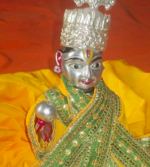






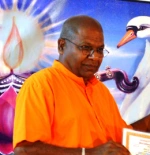


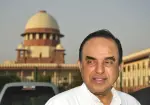
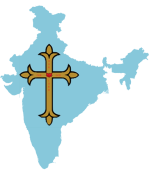


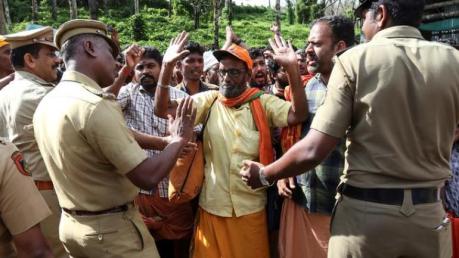
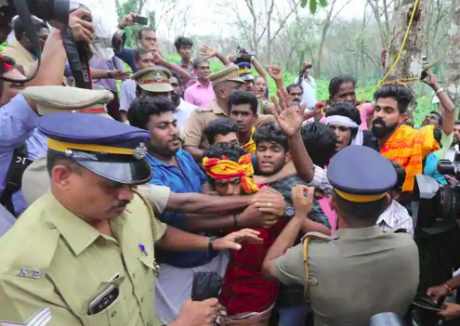
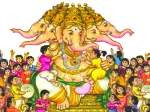



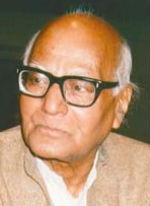

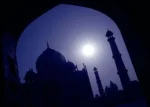




Police high-handedness in Sabarimala continues: Petitioners – Express News Service – The New Indian Express – Chennai – 27 November 2018
Kochi: Pointing out at the continuing police highhandedness at the hill shrine, petitioners in Sabarimala cases submitted before the High Court on Monday that even a judge was stopped by SP Yatish Chandra.
They claimed issuing prohibitory order in special security zone like Sabarimala was illegal. According to them, Ayyappa devotees can offer prayers at Sannidhanam at any number of time. Neither the state government, TDB nor police has any authority to prohibit devotees from being at Sannidhanam for more than 24 hours.
The prohibitory order issued by the Pathanamthitta district collector, in Sabarimala, Sannidhanam and Pampa is unconstitutional, they submitted.
The High Court is considering more than 20 petitions including the one filed by T R Ramesh of Chennai and the report by the Special Commissioner.
The devotees visit as groups under the guidance of ‘guruswamis’. This was not possible due to the prohibitory order. Hence, the petitioners sought a directive to ensure that the devotees are permitted to stay in Sabarimala and allow to perform all their rituals. According to the petitioners, the police have no right to prevent the chanting of ‘saranamanthra’ at Sannidhanam as it’s a part of rituals. They further sought to appoint a retired High Court judge to monitor the activities at Sabarimala.
IG Kashyap in-charge at Sannidhanam, Pampa
T’Puram: The second phase of police deployment in Sabarimala will begin from Friday. Headquarters IG Dinendra Kashyap will be the security in-charge of Pampa and Sannidhanam. Intelligence IG Ashok Yadav will be security in-charge of Nilakkal, Vadasserikkara and Erumeli. Thiruvananthapuram Range IG Manoj Abraham will continue as police joint chief co-ordinator. Wayanad SP Karuppasami and Vigilance SP K E Baiju have been appointed police controllers at Sannidhanam.
Kozhikode commissioner Kaliraj Maheshkumar and Thrissur SP M K Pushkaran have been appointed controllers in Pampa.
Telecommunication SP Manjunath H, Special Cell SP V Ajith will be the controllers in Nilakkal. Kerala Police Academy assistant director K K Aji (Marakkuttam), KAP I Battallion Commandant P V Vilson ( Vadasserikkara) and NRI Cell SP V G Vinod Kumar (Erumeli) are the other controllers.
Janapaksham ties up with BJP to throw CPM from power in Poonjar
Kottayam: With the alliance between CPM and Janapaksham party led by P C George MLA strained over Sabarimala issue, Janapaksham has withdrawn support to CPM-led administrative councils in Poonjar and Poonjar Thekkekkara grama panchayats. Janapaksham has served notice for no-confidence motion with the support of BJP members.
Earlier, Janapaksham member Lisamma Sunny had resigned from the post of Poonjar grama panchayat vice president.
LikeLike